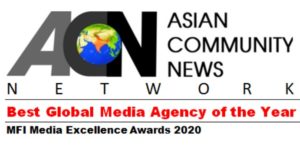Reforming Global Design Order in Post COVID-19 Scenario
With the Coronavirus having already affected millions across the world, one can expect built environments such as schools, public infrastructure, offices, industries to name a few, to imbibe a redefined design language.
By Ar. Dikshu C Kukreja, M. Arch. (Urban Design), Harvard University, USA.
While the world awaited the advent and the turn of a new decade, the outbreak of a pandemic would be the least expected possibility. In a moment’s time, global order shuddered and life as we know it changed.
As economies struggle to resolve the crisis at hand, one thing is for certain – lifestyle after Coronavirus is not going to be the same and one should be prepared for reformed habits and values.

Managing Principal, C P Kukreja Architects.
History bears witness to the drastic and profound aftermath of pandemics such as the Broad Street Cholera outbreak in England in the mid-19th Century, the deadly Spanish Flu affecting almost 30 percent of the total world population in the early 20th century, that scarred and forced different stakeholders to reinvent the norm of architecture.
From reformed sewerage design and treatment practices to updated town planning guidelines, reimplementing social distancing, increased awareness in maintaining sanitation practices and cleaner and smoother, a sharp deflection from the preceding heavy and ornamentation work, built surfaces using anti-microbial materials, etc. can be enlisted as few measures which sprung up at the time and have continued the following centuries.
With the Coronavirus having already affected millions across the world, one can expect built environments such as schools, public infrastructure, offices, industries to name a few, to imbibe a redefined design language.
Going forward, it is necessary to acknowledge the deep impact of the COVID–19 pandemic on not just one’s psyche but also their lifestyle. Medical infrastructure can also be seen struggling to accommodate the large numbers of incoming patients along with those already admitted in facilities.
Since most of these designs are rigid and boxed enclosures, it leaves no scope for expansion and quick assemblage of a temporary shelter or treatment unit.
Another example is the work from home culture. As we yearn to return to our workspaces, for a lot of offices, there has been a stark shift in their project deliveries and internal workings. One needs to accept the lost relevance of office designs as we are acquainted with and restructure and update as per the need of the hour. With a sudden requirement of isolation and accomplishing tasks from their abodes, there is an imbalance in performance and output.

There are two significant approaches that one could take into consideration.
The first involves short-term or quick-fix solutions where one can tweak plans, interiors, or materials to accommodate the required changes.
The second seeks a much more comprehensive long-term plan which involves remodeling the current spaces keeping in mind that today in 2020 we have been fast-forwarded ten years in our working culture to what would have been the norm in 2030. With a crystal gaze, one would need to bring awareness to accept this new paradigm of living.
We at C P Kukreja Architects (CPKA) being a multi-disciplinary architectural firm and working with an international clientele, particularly Multi-National Corporations from Japan and South Korea, have been continuously engaging within its different engineering departments in seeking the best possible solutions.

Gauging through data at hand using our resources, we have enlisted four main areas of impact – Creating awareness of establishing a connection between healthcare and spaces; Developing tools and technology that support best practices of design and construction as well as best material selection, etc.; Gaining an undeterred commitment from one’s Government, especially the local bodies or authorities, to understand statutory norms and how well they can adapt for future requirements; and lastly, a Rigorous consultation with design professionals and experts is of paramount importance to ensure that all guidelines are implemented well, meeting the health, hygiene and safety parameters for civic use.
At CPKA, our responsibilities extend from just building edifices to creating a habitable environment as well as healing the present and existing environment. Having contributed to this ethic through our past projects, we find ourselves in a position to suggest long term improvements that would benefit our generations to come. We have been working closely with experts from an array of backgrounds such as government organizations, healthcare, technology, real estate, etc., to understand how we can best resolve the current situation at hand.
Presently anticipating whether there is a V-shaped recovery in the economy in the coming few months wherein we all resume our lives back to how it was or a future with frequent lockdowns and the complete change in a social lifestyle, ‘Work from Home’ is a concept which is here to stay. Technology will also establish a stronghold in the functioning of economies and different verticals of development to equip us with better preparedness for future outbreaks.
As we speak, our new projects such as the Indian Oil Headquarters in Mohali, Punjab, and India International Convention Centre (IICC), Dwarka are being prepared to keep the pandemic in mind.
With IICC set to have the 3rd largest Convention Centre in the world, accommodating 10, 000 persons at a single time and with the intent of hosting significant international events such as the G-20 Summit, we are now looking to restructure our designs to impart values of social distancing, easily cleaned and anti-microbial surfaces, etc. which can ensure safety against COVID. This is one of India’s most prestigious projects and shall be managed by the South Korean company Kyntax.
Up until now, security was of primary concern but now going forward equally important is health safety. As an example, we currently find some of our designs for our industrial projects (for clients such as Hero Honda, JCB, TATA Motors, Cummins, Havells, etc.), where we introduced movement of goods through hangers suspended from the ceiling, insightful as they helped enable unobtrusive movement for staff on the ground and minimizing the need for social interaction. This not only helped increase efficiency in production but also ensured the safety of the staff.
 Even though this pandemic outbreak has placed us in a grim space, there’s a silver lining in for people who are getting to spend more time with their families, and less traffic movement resulting in cleaner and greener environments, etc.
Even though this pandemic outbreak has placed us in a grim space, there’s a silver lining in for people who are getting to spend more time with their families, and less traffic movement resulting in cleaner and greener environments, etc.
Reminding ourselves about how the aftermath of 9/11, an event that occurred in one global city, New York, in the United States, led to the reformulation of security norms of individuals as well as countries, one can be certain that life after COVID-19 will not be the same. Rather than immersing ourselves in the unforgiving circumstances, we should look at this as a cue to create livable and meaningful spaces that harmoniously integrate technology to improve the quality of human life.
About the author and CPKA:
Ar. Dikshu C Kukreja, M. Arch. (Urban Design), Harvard University, USA is the Managing Principal, C P Kukreja Architects, New Delhi.
Established in 1969, CPKA is one of the most revered architectural firms in the country with a portfolio of 1000 plus projects in 30 countries. Ranked amongst the Top 100 architecture firms in the world and Top 5 in Asia, CPKA’s integrated practice involves consultancy in Master Planning, Architecture Urban Design, Structural and Civil Engineering, Electrical, Plumbing, and Sanitary Engineering, Air-conditioning and FDV System, Fire Fighting System, Quantity Surveying and Estimating, and Project Management.



